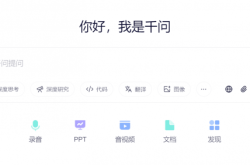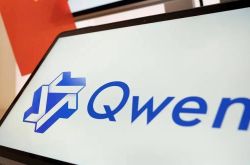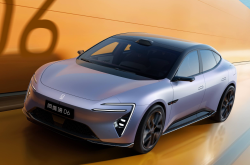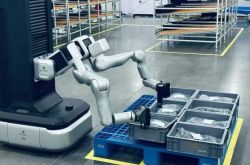Pony.ai vs. WeRide: The Dual Titans Clash in the Billion-Dollar Robotaxi Market – Who Will Conquer the Ultimate Challenge?
![]() 05/07 2025
05/07 2025
![]() 1354
1354
Introduction
The race for driverless vehicles is currently a symphony of "ice and fire." On one hand, there is a capital frenzy as Pony.ai and WeRide have successively gone public in the United States, with Robotaxi being hailed as the "crown jewel" of autonomous driving. On the other hand, however, financial reports reveal a "bloody" reality – in 2024, Pony.ai suffered a net loss of 1.967 billion yuan, and WeRide incurred a net loss of 2.517 billion yuan, with losses expanding by over 20% year-on-year.
This is akin to two martial arts masters sparring: one wields the "sword of globalization," while the other swings the "hammer of mass production," yet both are bound by the "shackles of commercialization." In the trillion-dollar Robotaxi market, will it be the realm of the "tech-savvy" Pony.ai or the stage of the "implementation-focused" WeRide?
Today, Unmanned Car News (public account: Unmanned Car News) delves into the financial reports, dissects the technology, and sees through the strategies to provide a clear account of this "dual giant competition"!
(For reference, please click: "WeRide, Luobo Kuaipao, Pony.ai, Tesla, and other driverless taxi companies are frequently making moves! Will online car-hailing drivers really lose their jobs?")
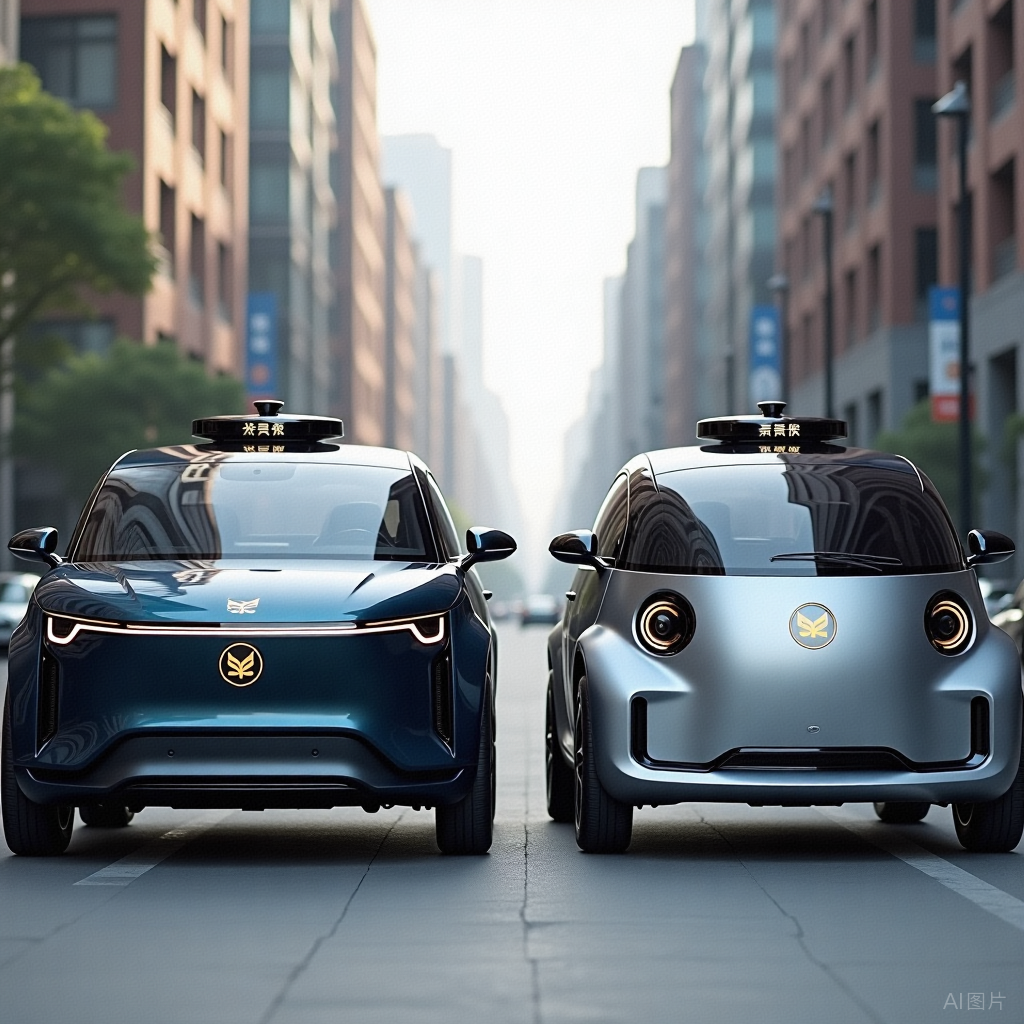
I. Technological Route: Academic vs. Pragmatist
1. Pony.ai: The "geek" of ultimate technology, obsessed with sensor stacking. The seventh-generation Robotaxi is equipped with 9 LiDARs + 14 cameras, yet the cost has plummeted by 70% compared to the previous generation. The secret lies in self-developed sensor cleaning solutions and automotive-grade chips.
Simulation training is taken to extremes: Using the PonyWorld world model to generate "virtual car accident scenes," allowing AI to crash 1 million times a day in the simulator, resulting in a real-world safety record 10 times higher than that of human drivers.
Pursuing L4 full autonomy with determination: In 2024, it launched a "driverless vehicle pickup and drop-off station" at Beijing South Railway Station, only to be criticized by an auntie: "This car slams on the brakes when it sees a delivery electric bike, driving even more steadily than my son!"
2. WeRide: The "business-savvy" master of mass production and implementation, a frugality expert in hardware. Using NVIDIA Orin chips + Bosch radars to create a "budget package" with a gross margin of 30.7%, crushing Pony.ai's 15.2%. The secret is moving the LiDAR from the roof to the bumper, saving 20% in costs. Scene harvester: Operating Robotaxi in Guangzhou's urban villages, unmanned sanitation vehicles at Beijing Airport, and selling desert-edition unmanned minibuses in the Middle East. The most daring move was customizing a gold-painted Robotaxi for the royal family of the United Arab Emirates after obtaining a license there. Data counterattack strategy: Relying on sanitation vehicles to accumulate extreme scenario data by sweeping the streets every day, resulting in a 37% lower accident rate than Pony.ai during rainstorms in 2024.
II. Business Landscape: Domestic Competition vs. Overseas Gold Mining
1. Pony.ai's "three-front war" – Robotaxi civil war: Engaging in "face-to-face combat" with WeRide in Yizhuang, Beijing, with both parties simultaneously opening up a south station shuttle line. The result is that Pony.ai's average fare per order is 28 yuan, with some passengers saying it might be 50 cents more expensive than WeRide? However, there have also been user complaints about "the air conditioning is quite strong, do I need to pay extra?"
Truck logistics sneak attack: Collaborating with Sinotrans to create 57 million kilometers of autonomous driving freight transportation. Driver Lao Wang complained: "This truck hesitates more than my wife when changing lanes on the highway, but it can drive continuously for 22 hours without rest, which is pretty laid-back!"
Mass production vehicle gamble: Betting on the Toyota Bozhi 4X mass production vehicle. Although only a few hundred units were sold in 2024, the small goal for 2025 is over a thousand units.
2. WeRide's "Middle Eastern Rich Strategy" and "All-Round Blooming" – Dubai's money power: Collaborating with Uber to create a "desert edition of Didi," with pricing four times that of domestic services. After a trial ride, a prince of the United Arab Emirates praised: "It's quieter than my Rolls-Royce, but there's no champagne fridge in the car, Bad!"
European rural areas surrounding cities: Using unmanned minibuses to pick up passengers at Zurich Airport in Switzerland, only to be ridiculed by local taxi drivers for strictly adhering to speed limits: "My grandmother could overtake this speed on a bicycle!"
Domestic quiet development: Secretly deploying 400 Robotaxi in Beijing's Economic-Technological Development Area, focusing on "commuter lines for workers." The result was that the morning peak hour was overwhelmed by programmers, causing the system to crash three times, prompting the CTO to change the code overnight. Even more impressively, WeRide has taken "scenario segmentation" to the extreme, achieving "all-round blooming"! Mini Robobus operates in parks, autonomous sanitation vehicles sweep the streets, and same-city cargo vehicles deliver packages. WeRide W5 unmanned logistics vehicle: Obtained Guangzhou's first batch of road test licenses for unmanned driving equipment! China's autonomous driving "icebreaker" sails into deep waters. In 2024, WeRide's product revenue (selling cars + sensors) surged 61.8% year-on-year, filling the hole left by the decline in service revenue. However, this also exposed shortcomings – the business is too scattered, like spreading out a large pancake, resulting in a 10.2% year-on-year decline in revenue.
III. Financial Report Data Unveiled: Growth and Loss Side by Side, Who is "Burning Money" Harder?
The financial report is akin to a corporate physical examination report. The 2024 financial reports of Pony.ai and WeRide immediately sparked heated discussions upon release. Both companies are frantically "burning money," but they "burn" in different ways.
Pony.ai's revenue in 2024 was 548 million yuan, a year-on-year increase of 4.3%, marking three consecutive years of revenue growth and solidifying its position at the top of domestic L4 autonomous driving company revenue.
However, operating costs rose faster than revenue, causing gross profit to drop by 32.5% and gross margin to fall to 15.2%. Even more exaggeratedly, the net loss for the year was 1.967 billion yuan, expanding by 120% year-on-year!
R&D expenses amounted to 1.743 billion yuan, accounting for over 80% of operating expenses, truly "powered by passion." Nevertheless, Pony.ai also has confidence. The seventh-generation Robotaxi model developed in collaboration with Toyota, BAIC BJEV, and GAC AION has seen a 70% reduction in cost, just waiting for large-scale mass production to "turn things around."

WeRide's revenue in 2024 was 361 million yuan, decreasing by 10.2% instead of increasing.
Service revenue decreased by 74.2 million yuan, mainly due to the shrinking of the ADAS R&D service business. However, product revenue increased by 33.5 million yuan, recovering some ground through the sale of Robotaxi and Robovan.
WeRide's gross margin was 30.7%, higher than Pony.ai's, but its net loss for the year was 2.517 billion yuan, even more than Pony.ai's!
R&D expenses amounted to 1.091 billion yuan. Although the amount was not as high as Pony.ai's, it accounted for nearly 30% of revenue. However, WeRide is thriving in overseas markets, collaborating with Uber to establish the largest Robotaxi fleet in the Middle East in Abu Dhabi, and obtaining licenses in multiple countries such as France and Singapore, continuously expanding its global business landscape.
IV. Pony.ai, WeRide, Luobo Kuaipao: Who Will Crack the "Cake" of the Trillion-Dollar Robotaxi Market?
In the trillion-dollar blue ocean market of autonomous taxi (Robotaxi), Pony.ai, WeRide, Luobo Kuaipao, and other companies are fiercely competing.
1. Pony.ai can be considered a representative of the technological stream.
Founded in 2016, it embarked on the journey of full-stack in-house research and development of L4 autonomous driving technology at an early stage.
Its technological highlights lie in multi-sensor fusion technology, which achieves precise perception of complex road conditions through the delicate coordination of LiDAR, cameras, and millimeter-wave radars. Its algorithm generalization ability is also excellent, easily adapting to both passenger and commercial vehicle scenarios.
In terms of operational achievements, Pony.ai's Robotaxi has "expanded its territory" in Guangzhou, Beijing, California, USA, and other places, with a cumulative test mileage exceeding 20 million kilometers.
From 2025 to 2026, Pony.ai plans to join hands with Toyota to deploy thousands of Bozhi 4X Robotaxi vehicles in domestic first-tier cities, produced by the GAC Toyota new energy production line, moving towards large-scale commercialization. Its business model is technology-driven, pushing forward policy evolution through technological research and development, cooperating with OEMs to achieve mass production, and jointly building an ecosystem with mobility platforms to gradually achieve profitability.
2. WeRide follows a "progressive" development path.
Since its establishment in 2017, it has focused on automotive-grade hardware and mass-producible design, deeply binding with automakers, which has become its core competitiveness.
In terms of product layout, WeRide's Robotaxi has the largest footprint in Guangzhou, with over 300 vehicles, and it has also launched the unmanned minibus Mini Robobus, covering closed scenarios such as parks and airports, as well as city logistics autonomous driving trucks in collaboration with ZTO.
At the business operation level, WeRide already has a Robotaxi autonomous driving fleet of over 1,000 vehicles in 30 cities across 10 countries globally, with an autonomous driving mileage exceeding 30 million kilometers.
3. Luobo Kuaipao relies on the strong backing of Baidu.
Starting from 2013 with pre-research on the Robotaxi business, it produced a prototype vehicle in 2015 and conducted its first real-road test in Changsha in 2019. It has currently deployed nearly 2,000 vehicles in about 15 cities nationwide.
Luobo Kuaipao's operating model is unique, with fixed boarding points to improve meeting efficiency, similar to buses with a higher density, providing point-to-point services. To attract users, during the promotional period, subsidies are substantial, with discounted prices far lower than those of ordinary online car-hailing services.
From order data, after deploying 400 driverless vehicles in Wuhan, order volume surged, with a peak of over 20 orders per vehicle per day.
As of March this year, Luobo Kuaipao has provided over 10 million travel services, with a safe driving mileage exceeding 150 million kilometers.
Pony.ai boasts strong technical strength and a leading global layout, demonstrating huge potential in its progress towards large-scale commercialization;
WeRide, with its deep cooperation with automakers and global layout, has taken the lead in product implementation and commercial revenue;
Luobo Kuaipao, relying on Baidu's technological and resource advantages, has seen rapid growth in order volume, and its operating model is constantly being explored and optimized.
However, the competition in the Robotaxi market is far from over, with challenges such as technological breakthroughs, cost control, and market expansion still looming ahead for all companies.
Who will be the first to crack this "hard nut" of the trillion-dollar market? Continuous attention needs to be paid to their performance in technological innovation, business model optimization, and market share competition.
In the "Three Kingdoms" battle of Robotaxi, who will reign supreme?
Unmanned Car News (public account: Unmanned Car News) believes that regardless of who wins, the ultimate goal of Robotaxi is "cost reduction and efficiency improvement." When the cost of Robotaxi drops to 80% of that of online car-hailing, when users get used to "calling an unmanned vehicle on their phones," and when policies allow for "full-area operation," the outcome of this "Three Kingdoms" battle in the trillion-dollar market will become clear.
Currently, both Pony.ai and WeRide are standing on the edge of a cliff – one step forward is the sea of stars, and one step backward is an abyss. And you and I are witnessing this "Age of Great Navigation" of intelligent transportation.


